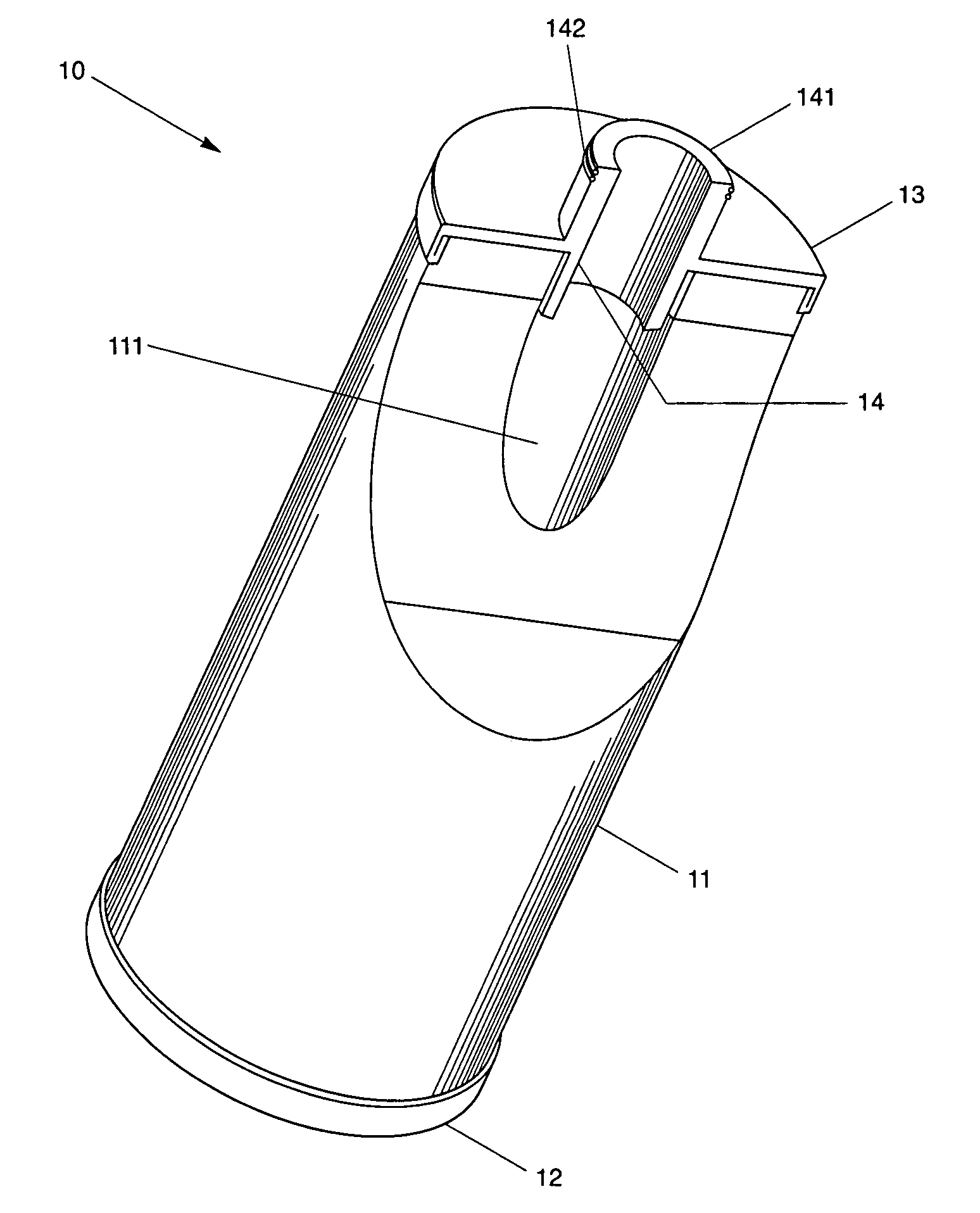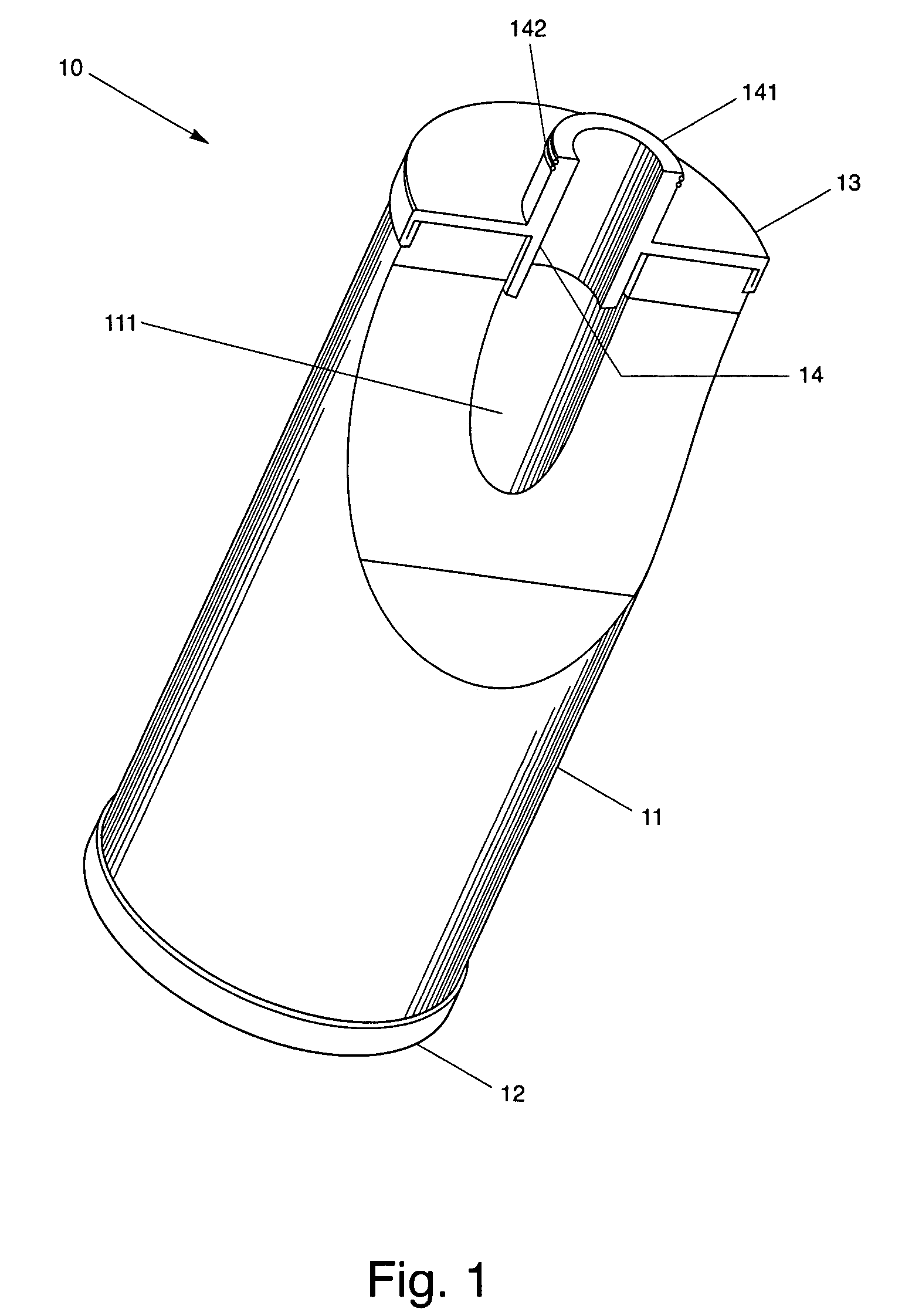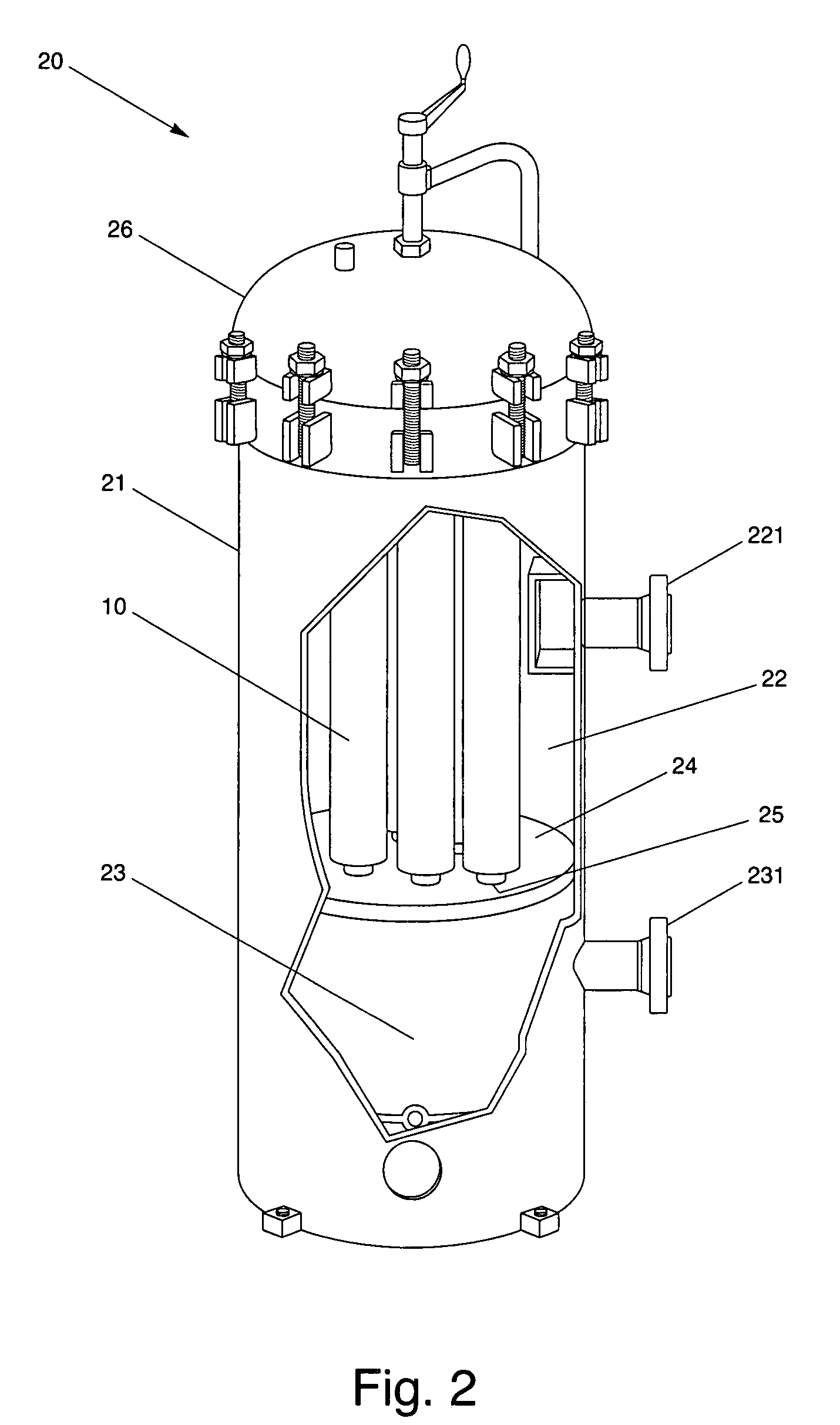Composite adsorbent block for the treatment of contaminated fluids
a technology of contaminated fluids and adsorbent blocks, which is applied in the direction of filtration separation, separation process, and treatment water nature, etc., can solve the problems of heavy metal removal, lack of stability of metal-laden products, and inconvenient water treatment technology
- Summary
- Abstract
- Description
- Claims
- Application Information
AI Technical Summary
Benefits of technology
Problems solved by technology
Method used
Image
Examples
Embodiment Construction
[0022]With reference now to FIG. 1, the present invention provides, in one embodiment, an apparatus 10 through which contaminated fluid may be directed for subsequent removal of contaminants within the fluid therefrom. Fluids which may be treated in connection with the present invention may be viscous, such as oil, or non-viscous, such as a liquid or a gas. Contaminants that may be removed by the system of the present invention includes heavy metals, such as mercury, cadmium, arsenic, and lead from complex waste fluids, such as produced water, and mercury from a variety of waste solutions and contaminated waste oils.
[0023]The apparatus 10, in an embodiment, includes a substantially tubular body portion 11 defined by a composite material designed for removing contaminants from fluids. Although illustrated as being substantially tubular, it should be appreciated that body portion 11 may be provided with any geometric shape. The composite material defining the body portion 11, in one e...
PUM
| Property | Measurement | Unit |
|---|---|---|
| pore size | aaaaa | aaaaa |
| radial thickness | aaaaa | aaaaa |
| temperature | aaaaa | aaaaa |
Abstract
Description
Claims
Application Information
 Login to View More
Login to View More - R&D
- Intellectual Property
- Life Sciences
- Materials
- Tech Scout
- Unparalleled Data Quality
- Higher Quality Content
- 60% Fewer Hallucinations
Browse by: Latest US Patents, China's latest patents, Technical Efficacy Thesaurus, Application Domain, Technology Topic, Popular Technical Reports.
© 2025 PatSnap. All rights reserved.Legal|Privacy policy|Modern Slavery Act Transparency Statement|Sitemap|About US| Contact US: help@patsnap.com



